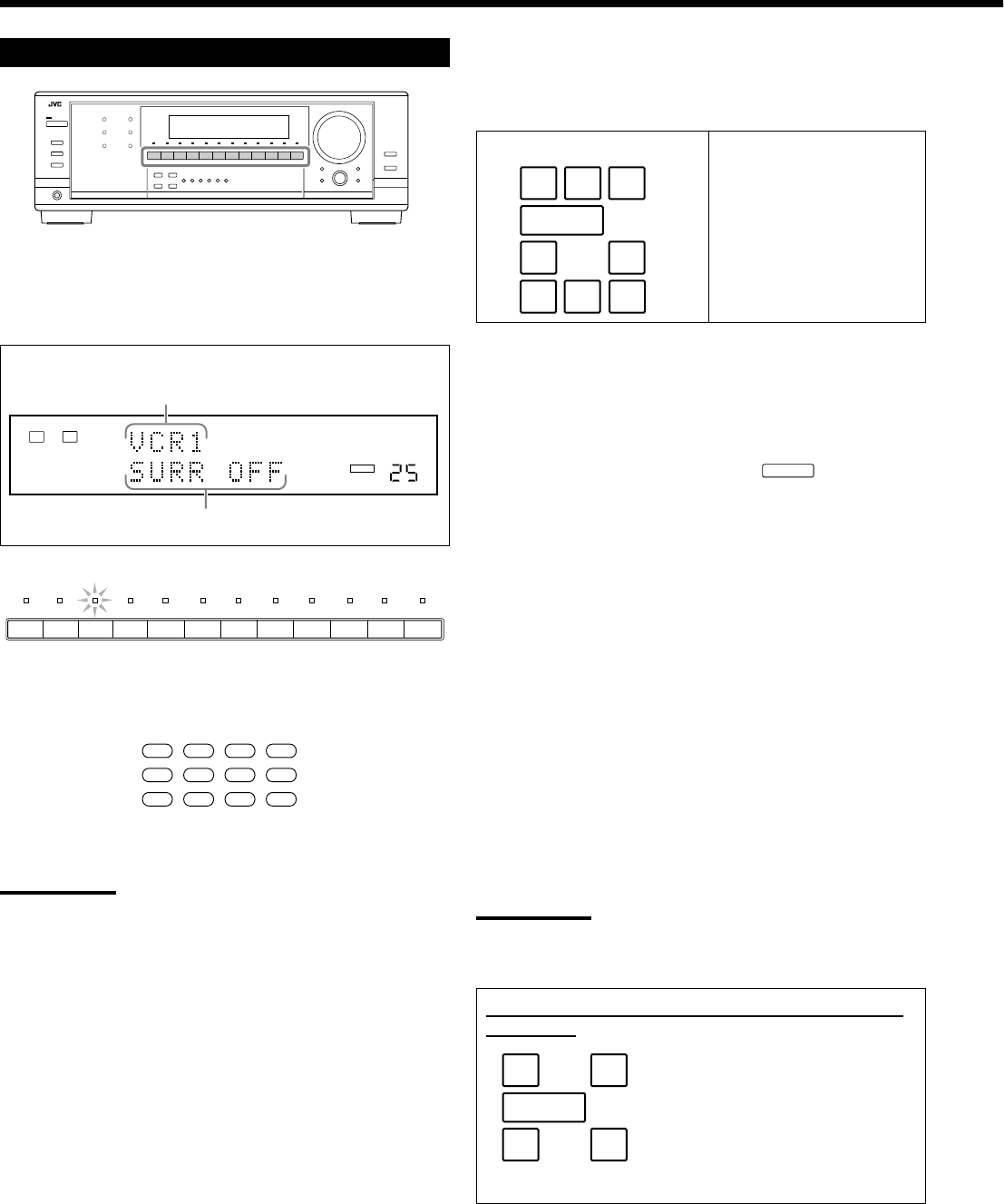
20
Selecting the Zone 1 Source to Play
Press one of the source selection buttons.
• When you have connected digital source components using the
digital terminals, change the input mode for these components to
the digital input mode (see page 22).
• The lamp on the selected source lights up (ex. when VCR 1 is
selected as the source).
Notes:
• When connecting an MD recorder (to the TAPE/MD IN jacks), and a
DBS tuner (to the TV SOUND/DBS IN jacks), change the source
names shown on the display. For details, see “Changing the Source
Name” on page 24.
• When you press one of the audio source selection buttons
(PHONO, CD, TAPE/MD, CDR, FM or AM) on the remote control,
the receiver automatically turns on. If you turn on the receiver with
the ZONE 1/ZONE 2 selector set to ZONE 2, press
ZONE 1 ON/OFF to activate Zone 1 operations.
– While Zone 1 is deactivated, press one of the audio source
selection buttons on the remote control with the ZONE 1/ZONE 2
selector set to ZONE 1 to activate Zone 1 operations.
• When you select DVD MULTI, you can enjoy analog discrete output
sound (5.1-channel surround reproduction) from the external
component.
– You may need to select analog discrete output mode on the
external component.
– When using the headphones, you can listen to the front channel
sounds (left and right) only.
– The Surround modes (see page 42) and DSP modes (see page
48) cannot be applied to DVD MULTI playback mode.
Speaker and signal indicators on the display
By checking the following indicators, you can easily confirm which
speakers you are activating and which signals are coming into this
receiver.
What speaker indicators light depends on the speaker setting
(For details, see “Setting the speakers” on page 34.)
• The frames of “L,” “C,” “R,” “LS,” “RS,” and “SB” light up, when
the corresponding speakers are set to “LARGE” or “SMALL” and
when the speaker is required for the Surround/DSP mode currently
selected.
• When “SUB WOOFER” is set to “YES,”
SUBWFR
lights up (see
page 34).
• All three frames on the row of “SB” are not used at the same time.
When “SBACK OUT” is set to “2SPK,” the left and the right ones
are used. When it is set to “1SPK,” the middle one is used (see
page 34).
The signal indicators light up to show the incoming signals.
L:•When digital input is selected: Lights up when the left
channel signal comes in.
•When analog input is selected: Always lights up.
R:•When digital input is selected: Lights up when the right
channel signal comes in.
•When analog input is selected: Always lights up.
C: Lights up when the center channel signal comes in.
LFE: Lights up when the LFE channel signal comes in.
LS: Lights up when the left surround channel signal comes in.
RS: Lights up when the right surround channel signal comes in.
S: Lights up when the monaural surround channel signal
comes in.
SB: Lights up when the surround back channel signal comes in.
Note:
When DVD MULTI is selected as the source, “L,”“C,”“R,”“LFE,”“LS,”
and “RS” light up.
Signal indicators
Speaker indicators
On the front panel
On the remote
Selected source name
The current Surround/DSP mode appears.
TV SOUND
/DBS
VIDEOVCR 2VCR 1
DVDDVD MULTI AMFMTAPE/MDCDRCDPHONO
DVD
DVD MULTI
CD
CDR
PHONO
TAPE/MD
AM
VCR 1 VCR 2
FMVIDEOTV/DBS
LINEAR PCM
L
R
ANALOG
VOLUME
SPEAKERS 1
ZONE 1
LFE
SUBWFR
LCR
SLS RS
LFE
LCR
SLS
SB
RS
SB
Ex.No sound comes out of the
center speaker and surround
back speakers though center
channel and surround back
channel signals are coming
into this receiver.
How to understand the speaker and signal indicator
illumination
LFE
SUBWFR
LCR
LS RS
SB
Ex. When VCR 1 is selected as the source.


















